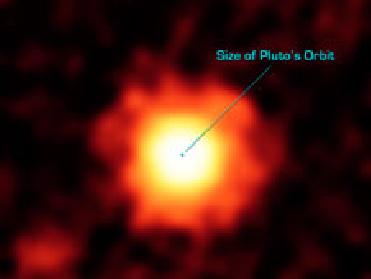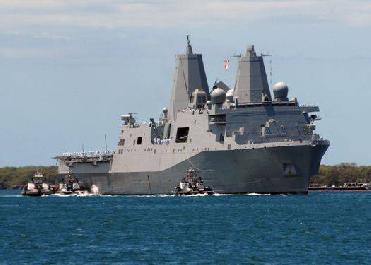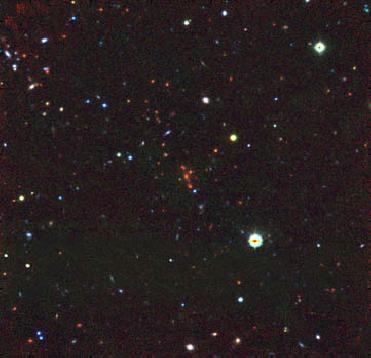
This infrared image, captured by Spitzer Space Telescope, shows the giant halo of very fine dust around the young star HR 8799. Image credit: NASA/JPL
WASHINGTON (BNS): Three planets revolving around a young star 129 light-years away could be involved in some orbital hyperactivity to secure their place around their host, observations by NASA’s Spitzer Space telescope show.
The image of a giant halo of very fine dust around young star HR 8799, located in the constellation Pegasus, has made astronomers believe that young planets circling the star could be disturbing smaller comet-like bodies, causing them to collide and kick up the huge halo of dust, NASA said.
The star – HR 8799, captured by telescopes in November 2008, was imaged with three planets orbiting the far reaches of the system, all three being 10 times the mass of Jupiter. Another star Fomalhaut was second such star with imaged planets.
The giant cloud of debris disk observed around the star, according to astronomers, is “very unusual” and must be coming from collisions among small bodies similar to comets or icy bodies that make up today's Kuiper Belt objects in our solar system.
The gravity of the three large planets is throwing the smaller bodies off course, causing them to migrate around and collide with each other. Astronomers think the three planets might have yet to reach their final stable orbits, so more violence could be in store.
“The system is very chaotic and collisions are spraying up a huge cloud of fine dust. What's exciting is that we have a direct link between a planetary disk and imaged planets. We've been studying disks for a long time, but this star and Fomalhaut are the only two examples of systems where we can study the relationships between the locations of planets and the disks,” said Kate Su of the University of Arizona, who is leading the Spitzer team.
The latest findings give evidence that when our Solar System was young, it too went through similar planet migrations. Jupiter and Saturn moved around quite a bit, throwing comets around, sometimes into Earth.
Perhaps Earth became a living planet when wet, snowball-like comets crashed into it during the most extreme point of this phase called the ‘late heavy bombardment’, thereby getting life’s favourite liquid – water.
 Previous Article
Previous Article Next Article
Next Article













The Indian Air Force, in its flight trials evaluation report submitted before the Defence Ministry l..
view articleAn insight into the Medium Multi-Role Combat Aircraft competition...
view articleSky enthusiasts can now spot the International Space Station (ISS) commanded by Indian-American astr..
view article